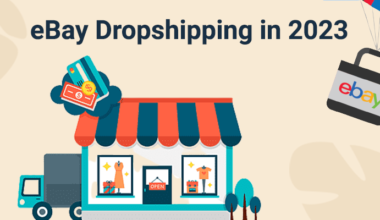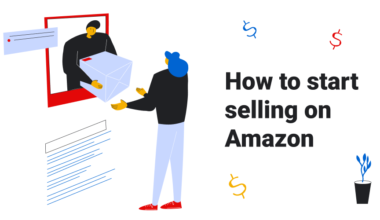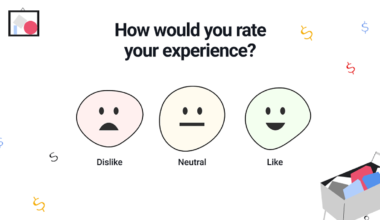eCommerce platforms offer a lot of benefits for retail businesses. And while there are roughly 26 million eCommerce websites across the globe, some of them are more successful than others.
It could be the strategy they use, the products they sell, or the niche they cover. It’s hard to tell. What is true, though, is that there are some key eCommerce website requirements that set a business up for success.
So, before you start your online journey, you should learn what things to cover to release your eCommerce potential to the fullest. Today, we’ll take the Magento platform as an example. However, these requirements are also true for any online business.
Ready to start?
- Mobile-friendly website
Regardless of the niche or platform you choose for your website, mobile always goes first. More than half of online shoppers currently use their mobile phones to purchase products online. The math is simple – if your store is not responsive, you’ll lose sales.
Moreover, search engines also make mobile-friendliness a valid ranking factor. Once you start creating an online store, make sure to cover both desktop and mobile versions.
- User-friendly design
Since competition is fierce, many online stores get all worked up creating websites that stand out. However, more often than not, they actually discourage people from browsing their websites.
Using “eye-catching” colours that are outlandish or too unfamiliar and poor navigation won’t do you any good. What your customers need is a simple yet attractive website that allows them to find what they are looking for in a click or two.
It is one of the most important eCommerce website requirements to focus on. If you do everything you can to drive people to your website, make sure your UI/UX design doesn’t drive them away.
- Personalized product recommendations
Personalization is also one of the key eCommerce website requirements you should keep a close eye on. It not only helps you to improve conversion rates but provides a better shopping experience and makes customers trust you more.
Magento related products block
You can use various data sources – your best-sellers, and customer browsing/purchasing history – to tailor their experience and promote products they are interested in buying.
Since Magento offers you this feature by default, you can only improve the process with the Magento 2 Automatic Related Products.
- Well-designed shopping cart and checkout
Shopping cart and checkout are the most crucial touchpoints in the customers’ journey. Why? It is too easy to lose customers there. Unexpected shipping rates or taxes, unclear return policy, and extensive checkout forms can force customers to abandon their shopping carts.
If your shopping cart and checkout pages are not well-designed you can lose customers who are already willing to buy from you. Ensure these two steps in the customer’s journey are simple, straightforward, and quick to complete.
You can even enable guest checkout to reduce the time required to finish the checkout process.
- Various payment integrations
Imagine doing your research and finding a perfect product that offers you all the features you need only to find out that you can’t pay for it with the payment method you prefer. Not the best-case scenario, is it?
Payment methods you offer in your eCommerce store can reduce cart abandonment or quite the opposite. Although you can’t include all potential payment alternatives, offering the most popular payment methods like credit cards, Paypal, Stripe, Amazon Pay, etc., is a good start.
- Shipping methods selection
Not all eCommerce businesses, especially small ones, can offer free shipping rates just like the big guys like Amazon and Alibaba do. What they can do instead is make shipping options as affordable as possible and maintain a high shipping quality.
Besides, it’s important to be clear about your shipping options right on the product pages. If you only ship to certain locations, make sure your customers know that before going all the way to checkout.
Default shipping methods in Magento
- Trustworthy customer reviews
Did you know people trust online reviews as much as personal recommendations? They are also extra cautious when purchasing from a brand they haven’t purchased from before.
So, if you want to build trust and boost customers’ buying confidence, you should dedicate a lot of time to collecting reviews and testimonials.
Honest user-generated reviews speak volumes better than a well-detailed product description. Moreover, it helps people to make sure a product is exactly what they need before purchasing.
- Clear communication and support
Want to improve customer retention and increase conversion rates? Provide live chat support and chatbots to assist customers quickly. In fact, quick customer support and clear communication are key differentiators, often more important than the product price.
People will have doubts while shopping in your store, and you should be there to unveil those doubts timely. Implement a self-service portal, helpdesk, and live chat to increase customer satisfaction rates in your eCommerce store.
- Loyalty programs
Landing a sale should never be your final goal with a customer. You can consider your sales strategy successful only when customers make repetitive purchases. Thus, before building an eCommerce website on Magento, you need to design a loyalty program.
To encourage customers to come back and continue choosing you over other brands, offer them some incentives. It could be reward points or some free products. Whatever works for your niche customers.
- Email marketing tools
Email marketing is not dead in 2023. It still remains one of the most effective ways to connect with your target audience, convert them into buying customers, and offer them personalized experiences.
This eCommerce website requirement is what you should consider in advance. While you’ll be looking for the best email marketing tools, pay attention to the integration with CRM systems and analytics tools. It will save you a lot of time and maximize your efforts in the future.

What is the next step?
Once you know what eCommerce website requirements are crucial for your business, you’re better prepared to create a store that yields the expected results. Yet, if you already have an eCommerce store, you can use this guide as a roadmap for improving your website.
You can optimize it for mobile, integrate various payment/shipping methods, gather valuable reviews, and still doubt it is enough. Just never stop.
As long as you keep your customers’ best interests in mind, your business is bound for success.






